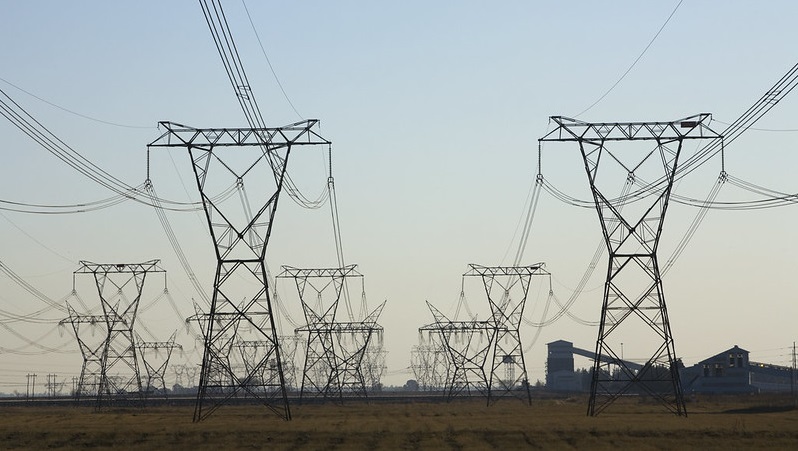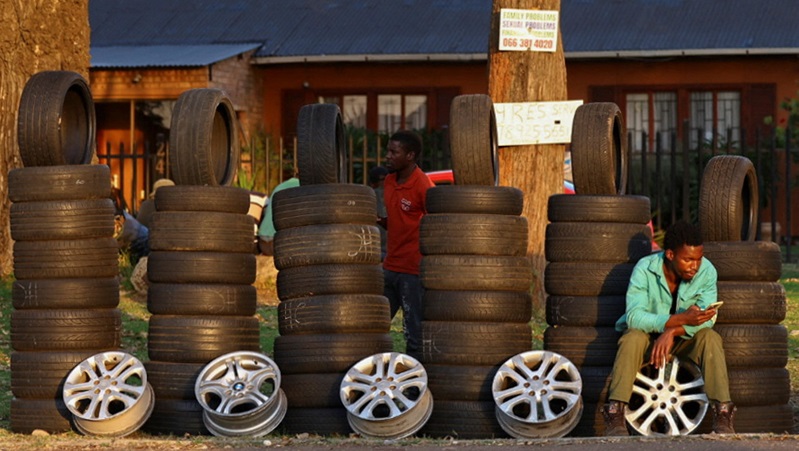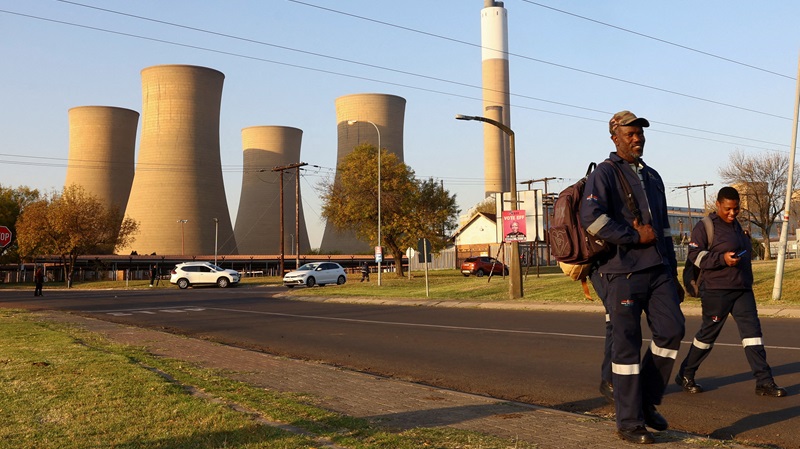Two and a half years ago, at the COP26 climate summit in Glasgow, South Africa signed a first-of-its-kind agreement with wealthy nations to collaborate on rolling out clean energy to replace coal in a socially fair manner.
President Cyril Ramaphosa described the $8.5 billion “Just Energy Transition Partnership” (JETP) as a “watershed moment” – and then British Prime Minister Boris Johnson called it a “game-changing partnership”.
But, as South Africa prepares to head to the polls next Wednesday in an election that could force Ramaphosa’s ruling party to share power for the first time since apartheid ended, there is still little to show for the energy transition deal on the ground.
Africa must reap the benefits of its energy transition minerals
Crispian Olver, executive director of the Presidential Climate Commission which is advising the government on the JETP, told Climate Home: “This is a bit like trying to turn a big container-ship – it’s slow to shift onto a new path, but once it’s on that new course, things will start to move faster.”
As of last November, just $308 million of grant-funded projects under the JETP had reached the implementation phase, government data shows. Of this, just $30m was categorised as spending on the just transition in the coal-dependent Mpumalanga province.
The government has not published equivalent information on loans – which make up 97% of the donor-backed support. But those following the JETP say progress has been slow partly because South Africa’s state-owned electricity generator Eskom is reluctant to take on more debt.
In addition, South Africa’s energy ministry and the wealthy governments that are providing funding disagree on the role of gas in the country’s energy transition. The donors backing the JETP are the US, Canada, Britain, Switzerland, the European Union, the Netherlands, Germany, France, Denmark and Spain.
Coal plant closures have been delayed by South Africa’s lack of reliable electricity, which has led to rolling power black-outs known as “load-shedding”.
While problems affecting the coal sector are a key cause of unreliable electricity supplies, Eskom has said it will delay the closure of three coal-fired power plants in response to the crisis.
South Africa’s best wind and solar resources, in the south and west, meanwhile remain under-utilised because the national power grid is already congested in those areas.
Azerbaijan pursues clean energy to export more ‘god-given’ gas to Europe
To transport the clean power, Eskom is trying to build transmission cables but progress has been slow as the utility is deeply in debt and reluctant to take on new loans through the JETP – even if those loans are offered on cheap terms.
An Eskom spokesperson said that “off-balance sheet options” – like allowing the private sector to build cables and substations – are being considered, but the details are still to be finalised.

Electricity cables at South Africa’s Lethaba power station in 2007 (Photos: World Bank)
Yet not all government departments want a rapid transition to renewables. The Department of Mineral Resources and Energy (DMRE), led by pro-coal minister Gwede Mantashe, recently published an energy planning document that envisages a sharp slowdown in the roll-out of solar and wind power and instead more of a shift from coal to gas power plants.
This has complicated things for the international partner group behind the JETP. Two people with knowledge of the negotiations told Climate Home that South Africa’s apparent reticence to switch to renewables is slowing the pace of funding flows under the deal.
On the other hand, South Africa’s parliament recently approved a Climate Change Bill and a Electricity Regulation Amendment Bill, which seeks to create a competitive power market and end Eskom’s century-long, coal-dominated monopoly. The legislation will render the DMRE’s controversial gas-reliant energy plans less relevant, as it paves the way for more electricity to be produced by private companies.

Energy minister Gwede Mantashe (left) speaks to President Cyril Ramaphosa (right) in 2018 (Photos: South African government)
But that has done little to appease anxious workers and residents in the heart of the country’s coal belt. In particular, the town of Komati offers a warning of the electoral damage that can occur if coal-plant repurposing projects don’t go smoothly.
Eskom’s coal-fired power station in Komati was retired from service in October 2022 after reaching its end-of-life date. It is now being converted into a solar, wind and food farm, a solar microgrid assembly factory and training facility.
Parts of it are now starting to open but for many local people, it is too little too late. “The community is currently facing a pandemic of unemployment and poverty,” said community leader Carlos Vilankulu, who is also a repurposing project liaison officer.
Eskom says none of its workers lost their jobs when the last coal units were taken offline – many were transferred to other power stations. But local guesthouses and other small businesses in the community say they are struggling as a result of the closure.

A man selling second-hand tyres waits for customers in Komati village, May 9, 2024 (Photo: REUTERS/Siphiwe Sibeko)
“Everything has come to a standstill. Many people are unemployed,” said Alta de Bruin, a guest-house owner based in Komati village. While the repurposing project has generally been well received, it “could have started a long time ago”, de Bruin told Climate Home.
The decision to close down Komati was made long before South Africa agreed to its climate finance package at COP26, but the local transformation project is intended to serve as a blueprint for other just transition initiatives in the country.
It has been a cautionary tale, according to Olver. Community consultations on the way forward only took place years after the decision was made to shut Komati – meaning local residents and businesses were left in a state of limbo. “The next [coal power] stations will do it better,“ he said.
Besides South Africa, JETPs have also been signed with Indonesia, Vietnam and Senegal. Leo Roberts, an analyst with climate change think-tank E3G, said South Africa’s delays in closing down its coal plants are concerning.
Indonesia has also postponed coal plant closures after expressing disappointment with rich countries’ support, while Vietnam’s partnership has ground to a halt amid political turmoil.
“We mustn’t lose sight of what the JETPs need to deliver,” Roberts said. “This is ultimately about reducing emissions to avoid catastrophic climate change, dealing with the huge health pollution challenges coal causes, and supporting countries to deliver self-defined low-carbon development pathways.”
(Reporting by Nick Hedley; editing by Joe Lo and Megan Rowling)
